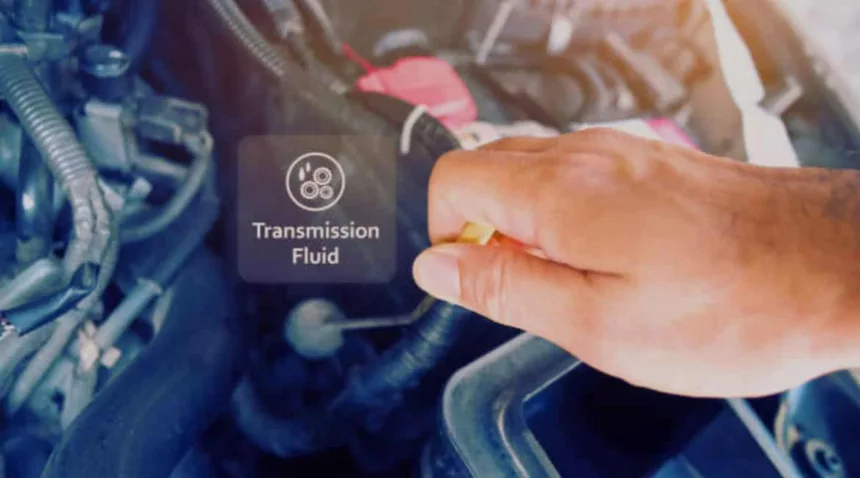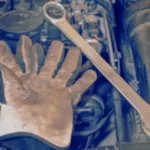Your car’s transmission is responsible for transferring power from the engine to the wheels. It’s a critical component that helps your vehicle run smoothly and efficiently. However, like any other part of your car, the transmission can develop problems over time. In this article on IchieTech, we’ll discuss some common car transmission problems and how you can diagnose and fix them.
Signs of Transmission Problems
The first step in diagnosing transmission problems is to be aware of the warning signs. Here are some of the most common signs that indicate your car’s transmission may need attention:
1. Whining, Clunking, or Humming Sounds
If you hear unusual noises coming from your car, especially when you shift gears, it could be a sign of transmission trouble.
2. Burning Smell
If you notice a burning smell coming from your car, it could be a sign that your transmission is overheating.
3. Leaking Fluid
If you see a red or brown fluid leaking from your car, it could be transmission fluid. This is a sure sign that something is wrong.
4. Slipping Gears
If your car starts to slip out of gear or shift erratically, it could be a sign of transmission trouble.
5. Delayed Engagement
If there’s a delay between shifting gears and the transmission engaging, it could be a sign of a problem.
6. Check Engine Light
If your check engine light comes on, it could be a sign of transmission trouble.
Diagnosing Transmission Problems
Once you’ve identified some potential transmission problems, it’s time to diagnose the issue. Here are some steps you can take to diagnose the problem:
1. Check the Fluid
The first step in diagnosing transmission problems is to check the fluid level. Low fluid levels can cause a variety of problems, so make sure the fluid is at the appropriate level.
2. Look for Leaks
If you see fluid leaking from your car, it’s important to determine where it’s coming from. Transmission fluid will be red or brown in colour, so look for leaks in those areas.
3. Observe the Transmission’s Behavior
Pay attention to how your car’s transmission behaves. Does it slip out of gear? Does it shift erratically? Does it make unusual noises? These observations can help you diagnose the problem.
4. Use a Diagnostic Tool
If you have a check engine light on, you can use a diagnostic tool to read the error codes. These codes can help you determine the problem with your transmission.
5. Examine the Transmission Cooler
The transmission cooler helps regulate the temperature of the transmission fluid. A malfunctioning cooler can lead to overheating issues. Ensure it’s functioning correctly.
6. Diagnostic Trouble Codes (DTCs)
Modern vehicles are equipped with onboard diagnostics that can provide valuable information about transmission issues. Use a diagnostic scanner to retrieve any trouble codes.
7. Check the Transmission Mounts
Worn-out or damaged transmission mounts can lead to misalignment and cause transmission problems. Inspect and replace if necessary.
8. Test the Shift Solenoids
Shift solenoids control the flow of transmission fluid and play a crucial role in gear shifting. Testing these components can help identify issues.
9. Inspect the Torque Converter
Problems with the torque converter can manifest as slipping or overheating. A thorough inspection can reveal any issues with this critical component.
10. Transmission Flush
If the fluid is dirty or contaminated, a transmission flush may be necessary. This process involves removing old fluid and replacing it with new, clean fluid.
Fixing Transmission Problems
Once you’ve identified the problem, it’s time to fix it. Here are some common fixes for transmission problems:
1. Replace the Fluid
If your transmission fluid is low or dirty, replacing it can often solve the problem.
2. Fix Leaks
If your car is leaking transmission fluid, you’ll need to determine the source of the leak and fix it.
3. Replace the Filter
The transmission filter can become clogged over time, which can cause problems. Replacing the filter can often solve these issues.
4. Replace the Solenoid
The transmission solenoid is responsible for controlling the flow of fluid in the transmission. If it’s not working properly, it can cause problems. Replacing the solenoid can often solve these issues.
5. Rebuild or Replace the Transmission
If your transmission is severely damaged, you may need to rebuild or replace it. This is a more expensive option, but it’s often necessary for severe problems.
Preventing Transmission Problems
Prevention is always the best strategy for avoiding transmission problems. Here are some tips for keeping your transmission in good condition:
1. Follow the Manufacturer’s Maintenance Schedule
Your car’s manufacturer will provide a maintenance schedule that includes transmission service. Follow this schedule to keep your transmission in good condition.
2. Check the Fluid Regularly
Regularly checking your transmission fluid can help you catch problems early.
3. Drive Responsibly
Aggressive driving can put a lot of stress on your transmission. Drive responsibly to avoid unnecessary wear and tear.
4. Use the Right Fluid
Make sure you’re using the right type of transmission fluid for your car. Using the wrong fluid can cause problems.
Conclusion
Your car’s transmission is a critical component that helps your vehicle run smoothly. However, it can develop problems over time that require attention. By being aware of the warning signs and taking steps to diagnose and fix problems early, you can keep your transmission in good condition and avoid costly repairs.










